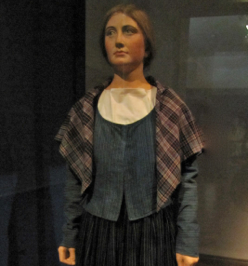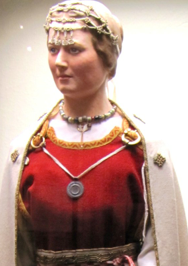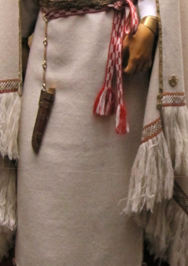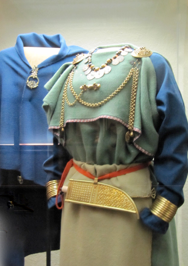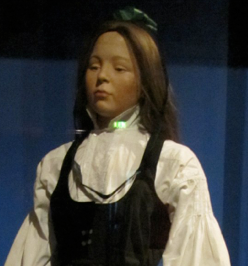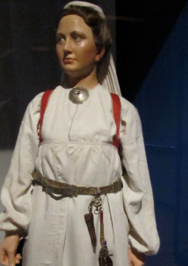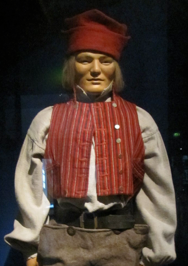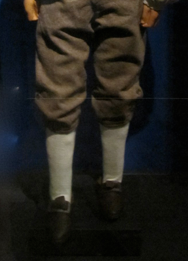finnish costume
National Museum of Finland
Helsinki, Finland
nordic lands, europe
july 19, 2010


finnish costume
National Museum of Finland
Helsinki, Finland
nordic lands, europe
july 19, 2010


The mannequins, dressed in various periods of costume in The National Museum of Finland, brought to life the land, people, and culture of the country over many centuries. With 20th century reconstructions of costumes found in 12th century graves, or later 19th century festive costumes worn by the people of Finland’s Swedish-speaking southern coastal region, the development of dress was historically documented. It was especially gratifying to see the aesthetic details on clothing constructed of natural materials, contrasted with the more typical displays of court dress or aristocratic costumes of the 17th-19th centuries. Here, it was possible to have insight into the more humble agrarian culture that predominated pre-Industrial Finland, an era when industrialization had no impact on the culture of Finland until the early 1900’s.
PHOTOS: Left Column: 1. A man’s cloak with silver clasp and a woman’s mantle dress of the peplos type. The Ancient Eura Costume Committee reconstructed these garments in 1982 based on the finds based on a single grave. It is thought that this type of garment was used throughout Southwestern Finland during the Viking age. 2. Knee Breeches belonging to the male folk costume of the 18th century. They were made of chamois, wadmal, broadcloth or linen. They were fastened with brooches or buttons, the number and material of which determined the value of the garment. This late 18th century bridegroom’s costume from Parkano consists of breeches, a shirt, richly pleated at the cuffs, and a red waistband and cap. Center, Top: Costume of a typical woman from Northern Savo, c. 1800-1850. In an expression of piety, these women rejected bright colors and elegant silk fabrics, preferring to wear instead costumes of blue-striped cotton, from which jackets, dresses, and aprons were made. The colors were predominantly blue, black and gray. Center, Bottom: Costume of Swedish-speaking Ostrobothnia. This local dress was still worn in the early 20th century. Dark-hued, flame spot woolen fabrics were made into bodices, dresses decorated with tasseled bands. The headdress on festive occasions was the öramössä or ear cap, a black silken cap. This costume was worn by a girl who lived in the southern coastal region, the rural parish of Kristiinankaupunki and was acquired by the museum in 1913. Right Column: 1. The Ancient Perniö Costume. The reconstruction based on finds of the 12th century Grave 6 of th Yliskylä cemetery in Southwestern Finland. Many of the details of the dress are not completely true to the original finds, but the reconstruction gives a good idea of the splendor of the woman’s attire during the Crusade Period. Reconstruction: Hjalmar Appelgren-Kivalo/Valborg Himanen, 1925. 2. Lutheran brides in southern Karelia wore white veils. During the first year of marriage, the wife would wear her tasseled headbands under the veil. In keeping with the Medieval custom, the brass mounts were passed on as an heirloom from mother to daughter. Suspended from the belt were a knife and sewing equipment. This costume dates from the early 19th century and comes from the village of Norsjoki.


Historic Folk Styles
